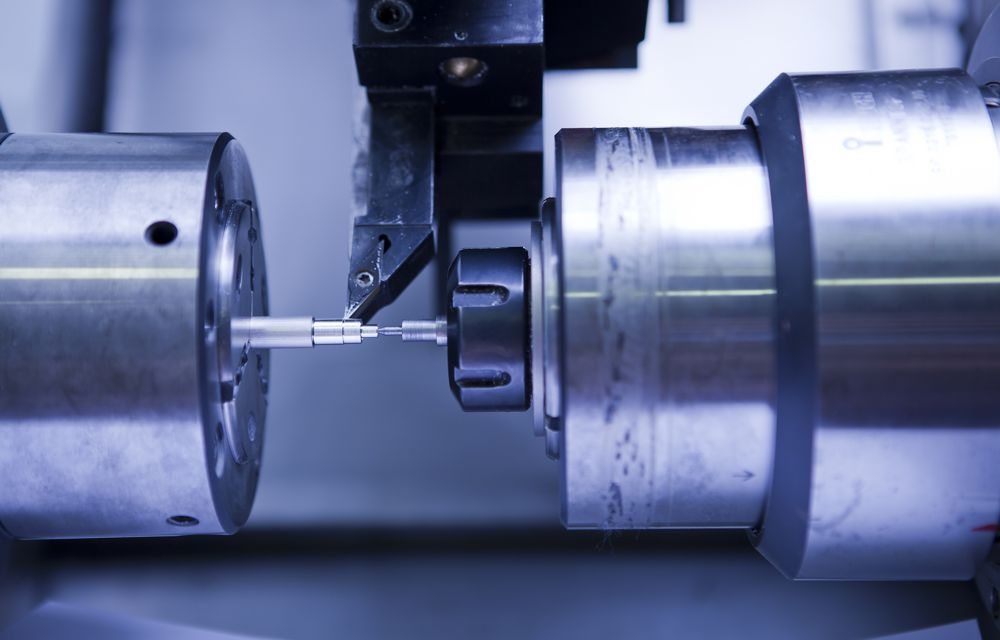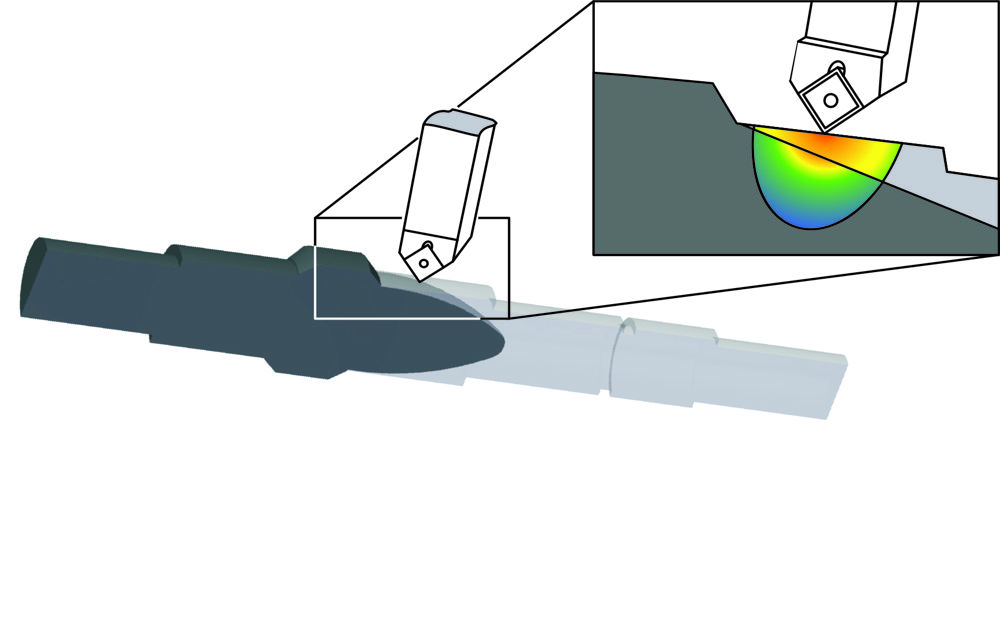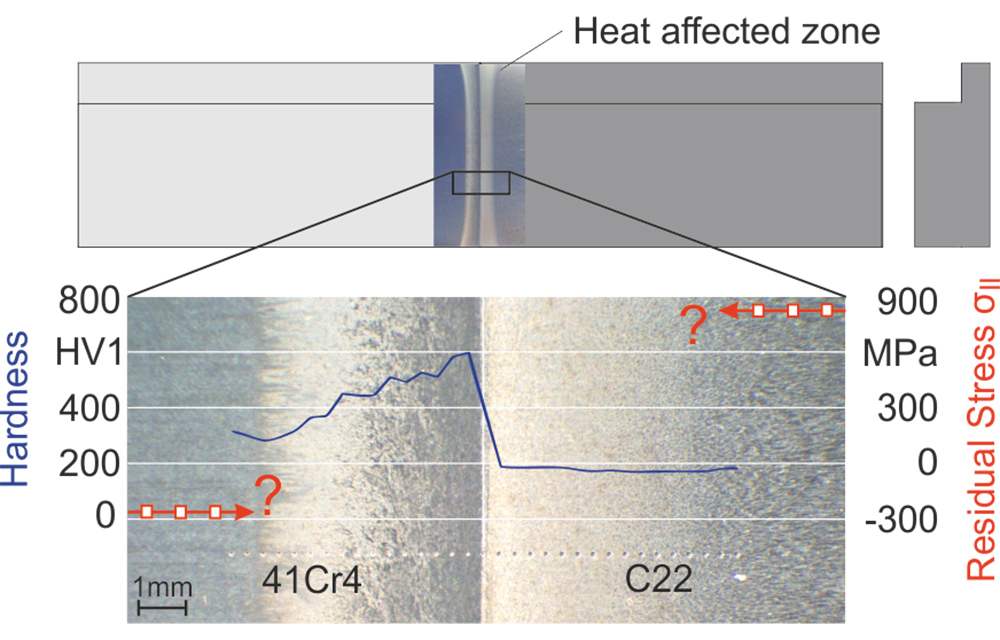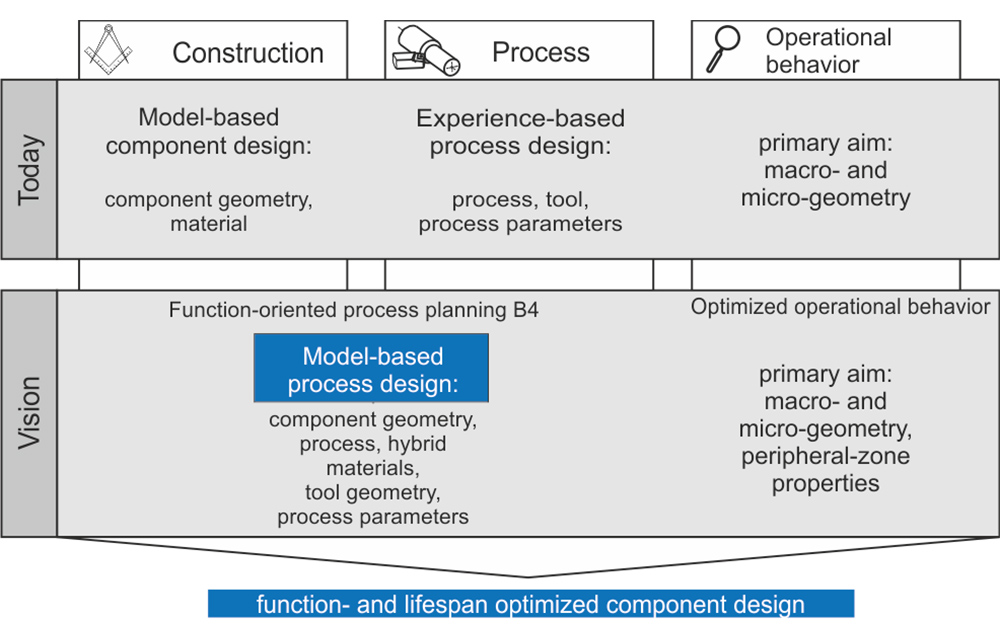Planing, turning, milling: After forming, nearly every component needs to be machined, affecting properties, such as wear resistance and lifetime. The machining process can induce residual stresses in the component, with the result that for example minor cracks close on their own and make the component more durable.
Within the scope of the Collaborative Research Centre (CRC) 1153, the Institute of Production Engineering and Machine Tools (IFW) is focusing on the formation and modification of such residual stresses. The aim is to improve the properties of a hybrid’s individual materials and to investigate the residual stresses in the area of material transition between the two different materials. The residual stresses shall then be influenced in a controlled manner to increase the bond quality between steel and aluminium.



